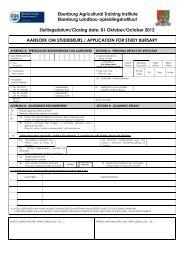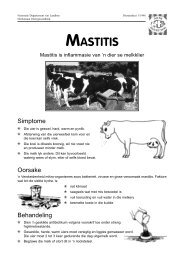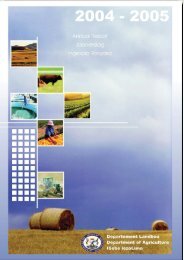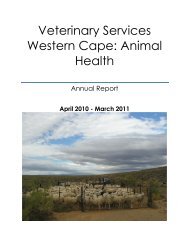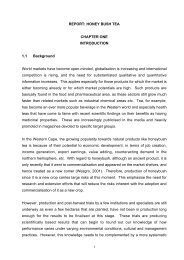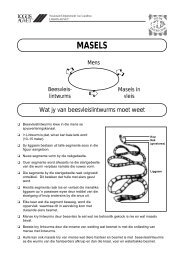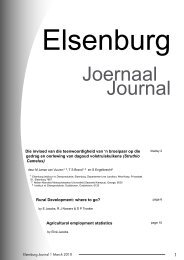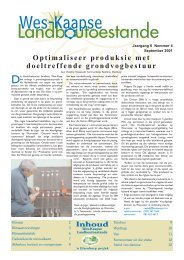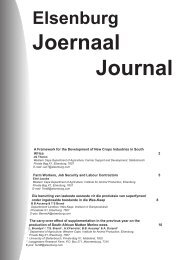The PROVIDE Project Standard Computable General Equilibrium ...
The PROVIDE Project Standard Computable General Equilibrium ...
The PROVIDE Project Standard Computable General Equilibrium ...
Create successful ePaper yourself
Turn your PDF publications into a flip-book with our unique Google optimized e-Paper software.
<strong>PROVIDE</strong> <strong>Project</strong> Technical Paper 2003: 3 October 2003<br />
4.6.2. Factor Immobility and/or Unemployment Closures<br />
More general factor market closures wherein factor immobility and/or factor unemployment<br />
are assumed can be achieved by determining which of the variables referring to factors are<br />
treated as variables and which of the variables are treated as factors. If factor market closure<br />
rules are changed it is important to be careful to preserve the equation and variable counts<br />
when relaxing conditions, i.e., converting parameters into variables, and imposing conditions,<br />
i.e., converting variables into parameters, while preserving the economic logic of the model.<br />
A convenient way to proceed is to define a block of conditions for each factor. For this<br />
model this amounts to defining the following possible equations<br />
FS<br />
WFDIST<br />
fact, a<br />
fact,<br />
a<br />
Min WF = 0<br />
Max WF<br />
WFDIST<br />
FD<br />
WF<br />
=+ infinity<br />
fact, a fact,<br />
a<br />
fact, activ<br />
fact,<br />
activ<br />
Min FS = 0<br />
Max FS<br />
fact<br />
fact<br />
fact<br />
fact<br />
fact<br />
fact<br />
= FS<br />
fact<br />
= WFDIST<br />
= FD<br />
= WF<br />
fact<br />
= WFDIST<br />
=+ infinity<br />
(C6d)<br />
where fact indicates the specific factor and activ a specific activity. <strong>The</strong> block of equations in<br />
(C6d) includes all the variables that were declared for the model with reference to factors plus<br />
an extra equation for WFDIST, i.e., WFDISTfact, activ<br />
= WFDIST<br />
fact , activ<br />
, whose role will be<br />
defined below. <strong>The</strong> choice of which equations are binding and which are not imposed will<br />
determine the factor market closure conditions.<br />
As can be seen the first four equations in the block (C6d) are the same as those in the ‘Full<br />
Factor Mobility and Employment Closure’; hence ensuring that these four equations are<br />
operating for each of the factors is a longhand method for imposing the ‘Full Factor Mobility<br />
and Employment Closure’. Assume that this set of conditions represents the starting point,<br />
i.e., the first four equations are binding and the last five equations are not imposed.<br />
Assume now that it is planned to impose a short run closure on the model, whereby a<br />
factor is assumed to be activity specific, and hence there is no inter sectoral factor mobility.<br />
Typically this would involve making capital activity specific and immobile, although it can be<br />
applied to any factor. This requires imposing the condition that factor demands are activity<br />
specific, i.e., the condition<br />
© S. McDonald<br />
47




